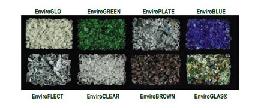 With the rising concerns of the effects of global warming, more and more countries around the world are banking on alternative energy use, solar power being the most popular. And with it, the demand for cheaper, but better solar power production is reasonably increasing.
With the rising concerns of the effects of global warming, more and more countries around the world are banking on alternative energy use, solar power being the most popular. And with it, the demand for cheaper, but better solar power production is reasonably increasing.
This is again giving rise to newer methods of sun-power production – encouraging the field of nanotechnology to come up with better solutions.
The U.S. scientists at the Rice University’s Center for Biological and Environmental Nanotechnology are recently designing a new method of producing molecular specks of semiconductors. Called quantum dots, the semiconductors may result in better as well as cheaper solar energy, without compromising on their efficiencies.
The innovative research makes four-legged cadmium selenide quantum dots using a new chemical method, which are particularly effective in converting sunlight into electrical energy.
Developed by Wong, graduate students Subashini Asokan and Karl Krueger, and CBEN Director Vicki Colvin, the new technology produces same-sized particles, with more than 90 percent of them being tetrapods.
Unlike the alkylphosphonic acid compounds being used as a standard, the new technology uses cetyltrimethylammonium bromide, for its being safer and much cheaper compared to alkylphosphonic acids.
Thus, it means cheaper raw materials and fewer purification steps, and, eventually, it is sure to be followed by production of cheaper solar panels.
Image: cben.rice.edu




